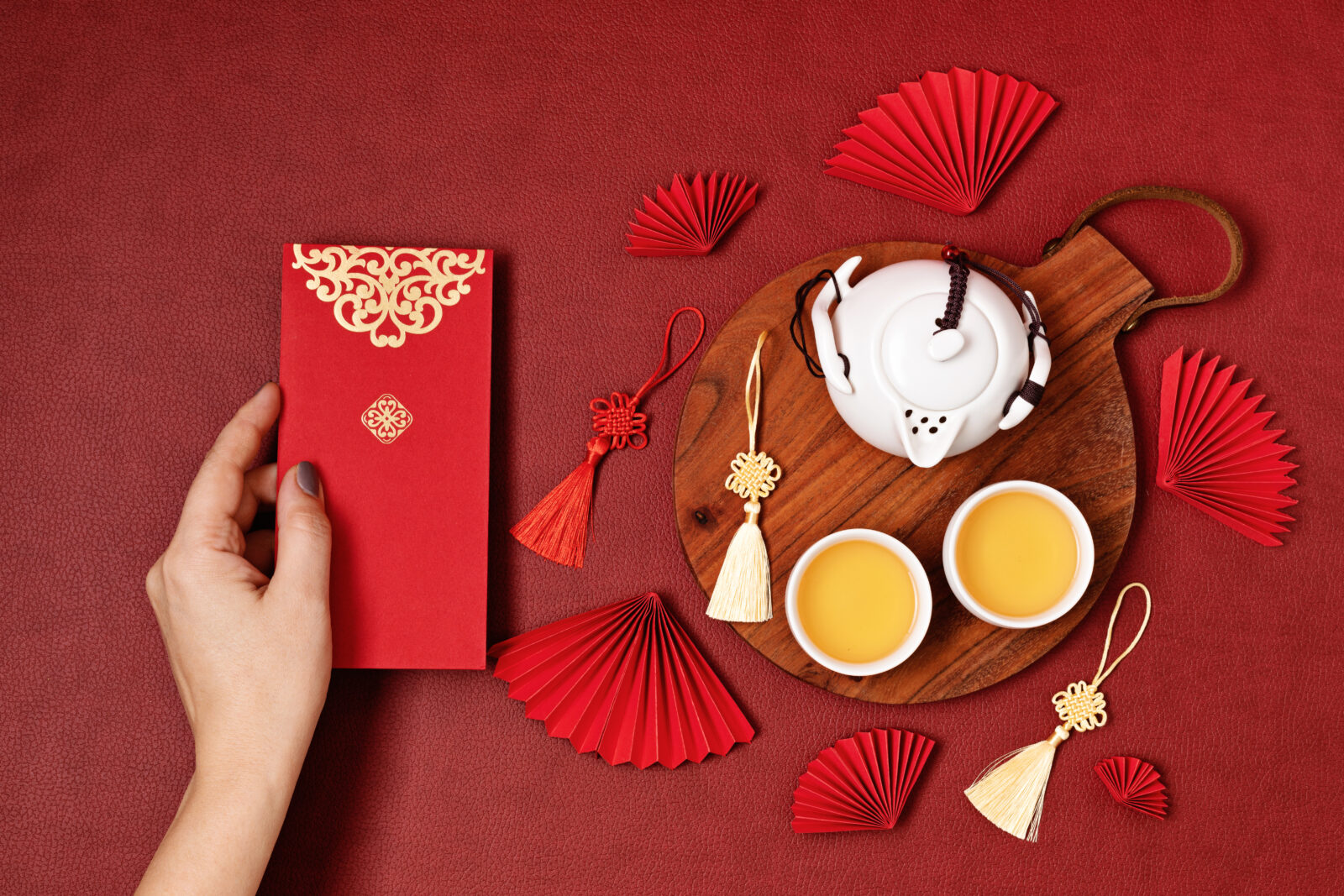Celebrate the Year of the Dragon with Red Teas!
Happy Lunar New Year and Year of the Dragon! The festivities began last weekend, and will continue until the Lantern Festival (including one in Denver) draws the year’s celebrations to a close, on Saturday, February 24.
The fifteen day spectacle of celebrations and gatherings invites people to eat certain foods, such as long noodles (for longevity) and spring rolls (for wealth). It compels people to honor lost loved ones. It sparks traditional music and dance, inspires people to clean their houses and light firecrackers and fireworks to ward off evil spirits.
Lunar New Year, which got its start in China, is an especially diverse holiday, one with traditions and practices addressing many aspects of life. One thing all of the activities share in common is reverence for family. Another? The color red.
People give children money-stuffed red envelopes called ya sui qian or hongbao. They decorate their houses with red lanterns, hang long red banners inscribed with good wishes on doors, make decorative cuttings out of red paper, and enliven homes with tassel-dangling knots made from red rope.
Why so much red?
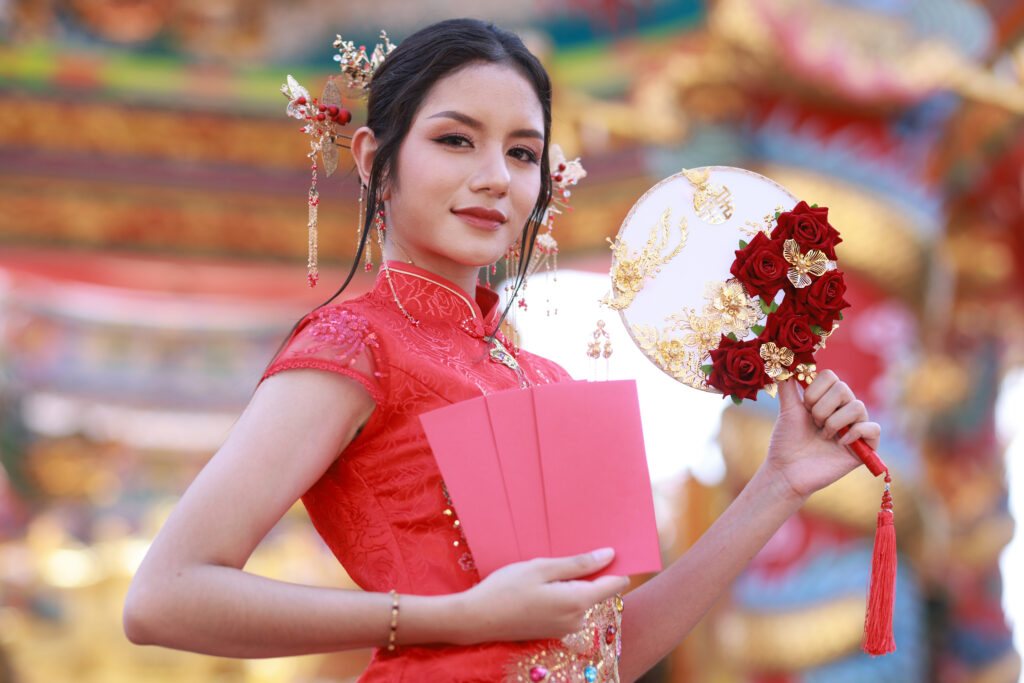
In China, shades of red are cherished. People associate red with good fortune and joy. Among other things, the color figures largely into weddings—including wedding gowns. And it is forbidden at funerals, where the color’s association with happiness is considered inappropriate. Tradition also links red with warding off evil spirits.
Given the color’s rich history in the flowering of Chinese culture, its centrality to China’s most profound annual celebration makes sense.
We at Ku Cha House of Tea incorporate red into our store decor, and embrace it the especial enthusiasm during Chinese New Year. And our connection to the bold color goes beyond the decorative arts. In fact, quite a number of our teas broadcast bright hues of red after they are brewed. On top of that, in China black tea is referred to as “hong cha”—which means red tea (rather than black tea). Why? Black tea leaves often are, indeed black (although some do have red tones). But once brewed, most black teas yield a reddish liquor.
Will sipping red tea will bring good fortune, and keep those demonic spirits away from your lives? We don’t have the answer. But there’s nothing wrong with playing it safe!
Red Teas for Chinese New Year: Lapsang Souchong Black (Organic)
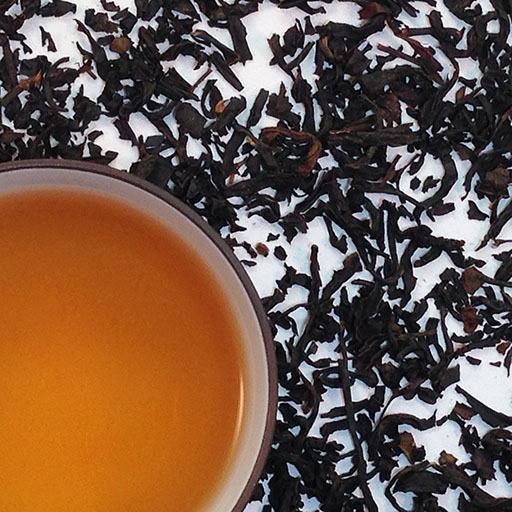
People have been sipping green teas for more than 2,000 years. But black tea is a relative newcomer, only emerging during the 1600s. And the first black tea in the world was lapsang souchong. This uniquely robust tea combines strong black tea leaves with a process that infuses the tea with a strong smoky flavor. To craft lapsang souchong, tea artisans smoke the leaves over burning pine logs. The process dries the leaves, arresting oxidation. But in doing so, it also punches up the flavor with smoke. It’s delicious.
Red Teas for Chinese New Year: Black Dragon Pearl Black
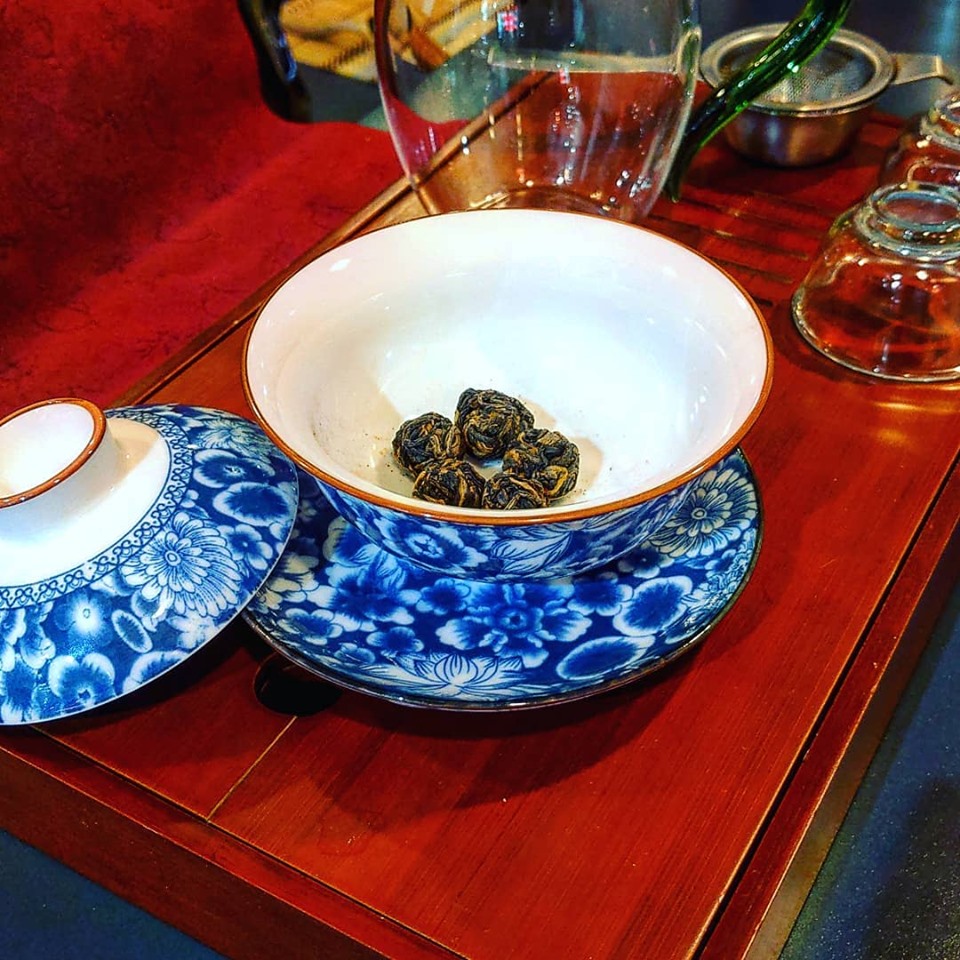
This is such a unique black tea, from the southern province of Yunnan. Tea farmers harvest the leaves and then roll them into pearl shapes. To brew, people pour hot water over the balls of tea leaves, watch them unfurl and then sip the deliciousness. As with most black teas, Black Dragon Pearl’s liquor offers reddish tones. The taste is smooth and malty with a hint of cacao and spice.
Red Teas for Chinese New Year: China Rose Black
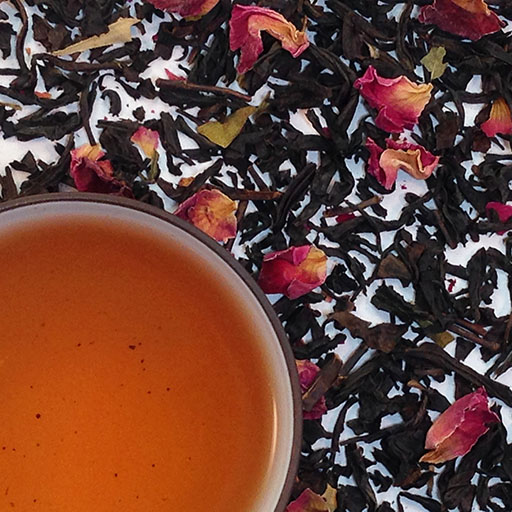
Looking to up the red quotient in your brew of cha hong? Then consider our China Rose, which combines high-quality black tea with beautiful red rose petals. When brewed, this elixir offers a smooth taste with a rich floral aroma and a clean finish. Pro tip: add milk to your cup to create a creamy, floral beverage. We love beginning our day with this tea—not only does the black tea send us a few welcome jolts, but the rose petals begin our day with intoxicating aromas.
Red Teas for Chinese New Year: Be Happy Tea
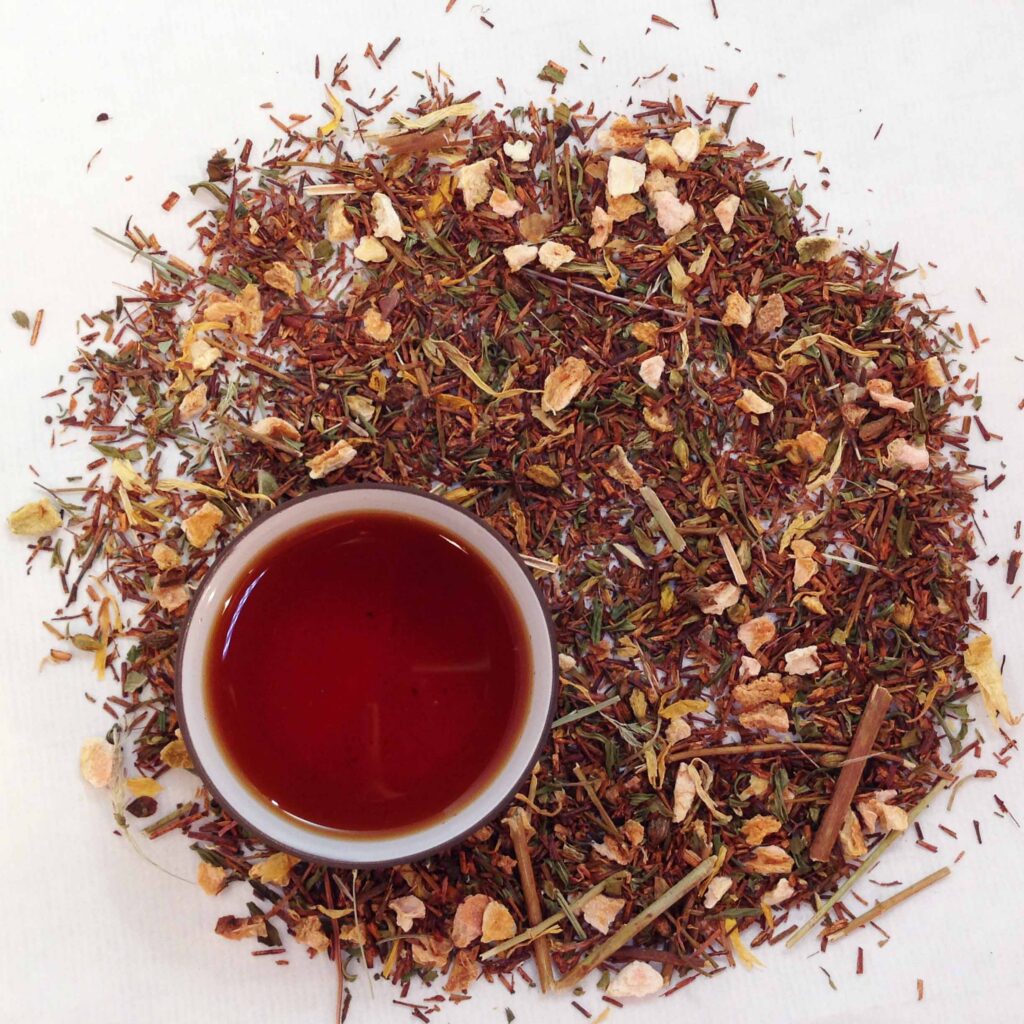
Another style of tea that dependably brews a red liquor of rooibos. People across South Africa sip rooibos, which comes from a local caffeine-free shrub, all day, and every day. We love the woodsy notes that rooibos brings to the beverage experience, and have developed a range of custom blends that spotlight the glories of this African botanical. And with most of them, the brew will be red—in fact, the dried tea itself is reddish.
Our Be Happy tea gets its name from the incorporation of St. John’s Wort into the blend. People around the world, but especially in Europe and North America, ingest this flower (often in the form of a capsule) to ward off depression. In Be Happy you get the plant itself, along with peach rooibos and lemon peel, which balances the earthiness of the rooibos.
It’s a wonderful tea, full of flavor and health benefits—and red colors.
Red Teas for Chinese New Year: Cape Town Medley
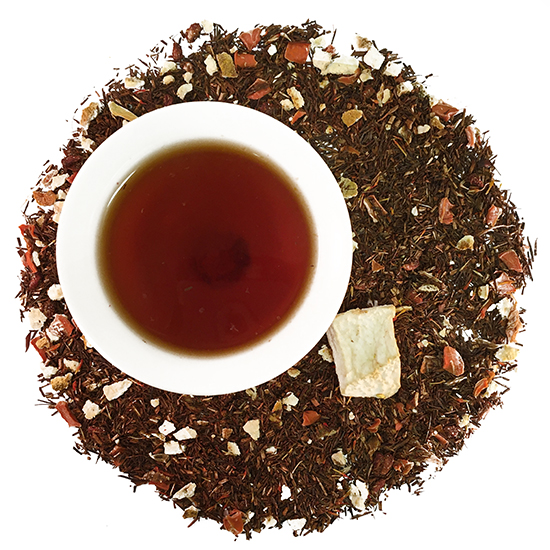
Bring on the health, and flavor, with this deep red rooibos blend. Rooibos serves as the foundation for this tea, to which we add red pomegranate—an antioxidant-rich superfood—pomelo, orange, carrot and safflower. In addition to antioxidants, this custom blend also offers a bounty of electrolytes. Rooibos is one of the more electrolyte-flooded botanicals in the world.
Red Teas for Chinese New Year: Rooibos Earl Grey
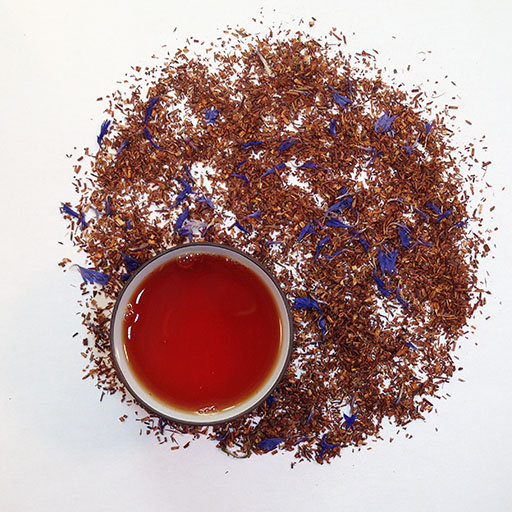
Many of us savor every last sip of a morning or afternoon cup of Earl Grey. It was Queen Elizabeth’s tea of choice for good reason—it is enchanting. The key is the bergamot, which is a kind of citrus grown on Italy’s southern coast. All Earl Grey teas include bergamot.
Most Earl Grey is black tea. We sell a range of delicious Earl Greys, but wanted to also craft a rendition of Earl Grey that leaned into rooibos instead of black tea.
Our Rooibos Earl Gray simultaneously broadcasts heady notes of floral, citrusy bergamot and rooibos’s naturally earthy perfumes. The combination is a triumph. With bewitching aromas, sumptuous flavors and a bounty of health options, this tea might quickly become a standard morning brew.

